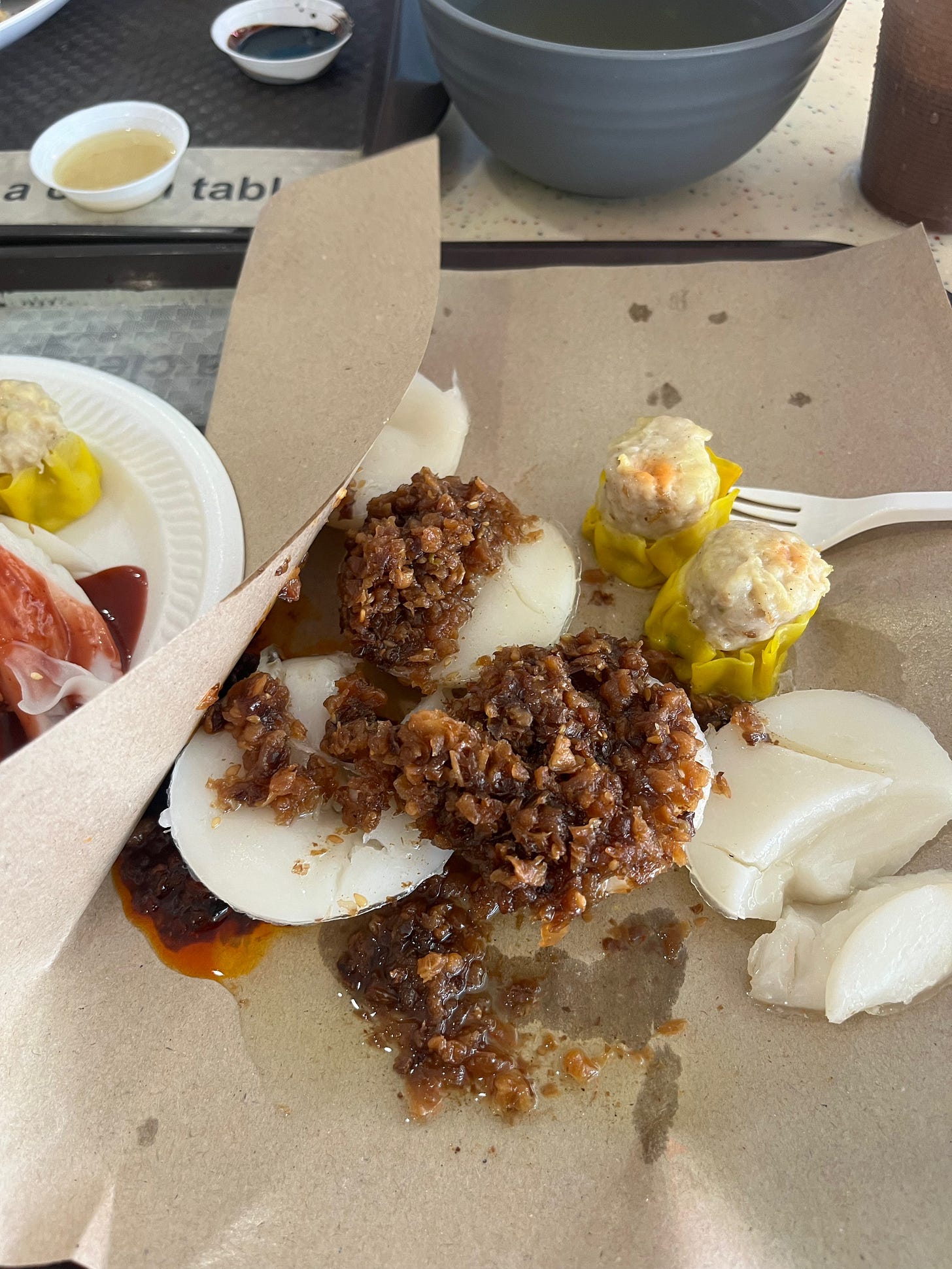
There’s a whiff of sadness in this letter, as I wait for my return flight to London. From sushi to bar to café, there was no shortage of things to try and foods to discover at home in Singapore. Most importantly, I reconnected with some people important to me, and even met new people doing amazing things in the gut health space. It really felt like coming home this time.
Food news of the week:
Had the chance to check out more Japanese gems even after Japan, because I don’t tire of yakitori or omakase any day. Checked out newly opened Uoharu from Tokyo, of which a review is much deserving. We were greeted with a show of fish-grilling, smiley service, and some insanely good mac and cheese with an uni-infused bechamel and more fresh uni on top. Then there’s Micro bakery with Faith, a fantastic little homegrown bakery, originally as micro as a small kitchen, that does a fully-moist banana bread, and zucchini loaf that tastes less vegetal than chocolatey, the way it should be. I revisited Blu Kouzina too, which still does a variety of well-whipped dips (favourites: baba ganoush and taramasalata) to go with their selection of pungent greek wines, and had my favourite bouncy, greasy chwee kueh at Tiong Bahru Market.
Science of the week:
Listened to a cool podcast on the drug that’s all the rage now– Ozempic, and the benefits of microdosing it. I know a few people who are on ozempic, which is basically a peptide (GLP-1) that’s produced in specific cells of your gut, and microdosing (not overdosing!) experiments have shown benefits that go far beyond just weight loss– results have shown increased insulin secretion from the pancreas, important for blood glucose control, and it even helps to remove fatty infiltrate from muscle, aka the biggest metabolic disruptor (by drastically increasing inflammation in the body). Then of course, it slows gastric motility so you feel fuller for longer, hence easier weight control.
Insight of the week:
Backpropagation is the term I learnt just a few days ago. It’s an algorithm used in training artificial neural networks in supervised learning, by minimising prediction errors. It calculates error in an output, then propagates that error backwards through the network, to adjust the weights. This iterative process improves the network’s accuracy overtime. So say AI sees an image of 5 as 7, with backpropagation, it slowly learns how 5 deviates from 7, so it doesn’t make the same mistake in the future.
Recipe of the week:
I’m crazy about pandan anything, and these fragrant, nutty, slightly coconutty waffles are it. Pandan, for those who don’t know, is a fragrant leaf native to Southeast Asia, known for its distinctly sweet and nutty flavour that’s used in both sweet and savoury dishes.
Pandan waffles (makes 6-7 thin Swedish waffles, modified from here)
Ingredients
240g sweet potato flour (substitute with 200g all-purpose flour)
1 tbsp baking powder
1/2 tsp baking soda
pinch salt
2 tbsp coconut sugar (or brown sugar)
2 eggs
1/2 cup milk of choice
3 heaping tbsp store-bought or homemade kaya (or yoghurt if you don’t have this on hand)
1 drop pandan extract (bought at your local oriental store)
80g melted, unsalted butter
1 cup soda water
Directions
Preheat your waffle iron according to the manufacturer’s instructions. In a large bowl, whisk together the dry ingredients– flour, leavening agents, salt and sugar. Add the egg, milk, pandan extract, melted butter, kaya, and lastly, the soda water. Cook in the preheated iron according to the iron’s instructions. In my Sevren waffle maker, it took 4-5 minutes each side, before the edges went crisp and golden.
These freeze wonderfully. Let the waffles cool on a cooling rack, before layering them with pieces of parchment between each waffle so they don’t stick together when you take them out the next morning. The next morning, take them out, microwave for 20 seconds, then stick in the toaster until golden and crisp again. They are best with banana, and anything coconut-themed (I used coconut sugar), and some kind of nut butter to bring out those nutty flavours even more.
Restaurant of the week:
I’ve heard so much about Gu:um even from afar, so was jumping out of my pants when I got the chance to celebrate a friend’s early birthday there.
We shared a veritable feast of meat, ferments, pancakes with assorted elements on top, and the dessert of the week– their famous hotteok, which they also serve at their fine dining sister restaurant Nae:um. The menu here is divided into hot and cold starters, and meats and seafood straight from the grill, alongside more traditional mains with some kind of twist, and of course, the dessert. It’s recommended to get a bit from every section of the menu, which is what we did.
A seafood pajeon was decorated with fried squid, octopus and even fresh scallop, a textural symphony of mildly toothsome rubber more so than just briny toast. It was the beef tartare pancake or pajeon, though, that really stole the show for me, with all the rich and umami flavours of tartare, but with more spice and shout than your traditional French edition, sitting on top a glass-crisp pancake, with flavoured egg yolk for punch.
Keep reading with a 7-day free trial
Subscribe to alexcrumb to keep reading this post and get 7 days of free access to the full post archives.






